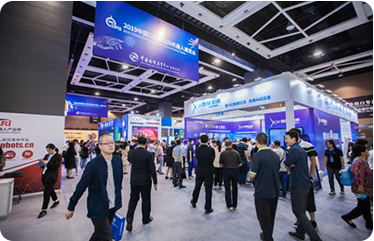- 当前位置:
- >
- 首页
- >
- 展会资讯
- >
- 家具行业
- >
- UNITED KINGDOM | Philippe Malouin: design outside the box
UNITED KINGDOM | Philippe Malouin: design outside the box
| 分享: |
Text by Patrizia Malfatti
Steel Works, The Breeder Gallery, photo courtesy Philippe Malouin
Freedom of action and outcome. The Canadian designer harnesses sculpture, industrial design, geometric forms and natural materials to give shape to innovative, powerful and empathetic design.
A gentle giant, a man of few words. Simple and honest, like his pieces, whether serial or individual. With a broad and winning smile.
Born in Canada in 1982, after accomplishing his studies in Eindhoven, Paris and Montreal, he moved to London but often spends the autumn months in Athens “because the climate is amazing.” This is where last November The Breeder Gallery held a one-man show of his work, made from discarded pieces reassembled with a Dadaist touch, imbuing them with new meaning and new colours.
Steel Works, The Breeder Gallery, photo courtesy Philippe Malouin
Malouin started his career as a designer with Tom Dixon, and set up his studio in the English capital in 2008. His first solo show was held the following year at the Next Level Galerie in Paris.
His rigorous research into materials, painstaking production processes and spare, familiar aesthetic have made him something of a one-off and, as he likes to say, “I’m a designer of all sorts.”
Day as Night show, photo courtesy Philippe Malouin
Eschewing fashions, because following them “is the worst thing you can do” in that the designs already have an inherent sell-by date, he has always embraced the ability of objects to conserve value and the possibility of being put back onto the market after being discarded.
Innate and ante litteram sustainability that goes way beyond production processes and materials (he also won the Wallpaper Award for “best use” of materials, Award received also as Designer of the Year 2018).
Tables, chairs, lights, rugs, objets d’art and installations make up his vast portfolio of works for clients such as Desede, SCP, Resident, Vaarnii, Ishionomaki Lab, cc-tapis, iittala, Marsotto Edizioni, Hem, Ace hotel, MATTER MADE, Established & Sons, Roll & Hill, 1882, Kvadrat, Umbra Shift, Caesarstone, IZé, Swarovski, Bloomberg, Aesop and Touch Digital.
Philippe Malouin, ph. Jasmine Deporta
QA&Q
You’re an almost impulsive experimenter, but also one who reflects a lot. For example, your early projects include a blow-up table seating 10 people which, when not being used, can be packed into a large bag. Experimenting also means risk-taking. What’s the greatest risk you’ve ever taken
Most of our projects come from experimenting. I began my career working for design galleries, as many young designers do these days. Now 80% of my studio’s work is industrial design for mass production. The outcome of the work created for these galleries was always the upshot of trial and error.
I remember doing a special exhibition for one of my editors (Hem) when they asked me to create a body of work around the idea of making screens and separating spaces.
The timeline was tight, and there wouldn’t be much time to manufacture and ship the exhibition to New York City. So Hem sent me and an assistant to create an entire exhibition in a small studio in New York with the simple idea that I would create the show by purchasing materials and elements from places I could walk to and take them back to the studio.
This was a big gamble, but as you can see the results were interesting. The actual result was a small printed publication on the idea of experimentation.
Stilts Side Table for Vaarnii, photo courtesy Philippe Malouin
Q
In your projects, form and decoration come last of all in your creative process, after the idea, the study of the various implementation phases and the consideration of materials. In your first rug collection, Lines for cc-tapis, you deliberately celebrate the imperfection of the weaving. Just as in your metal pieces you leave the soldering exposed. Why
I wouldn’t say that form comes last necessarily. I would only say that concept comes first.
And often the concept as well as the experimentation has the ability to create the form. A form that is “discovered” is sometimes more interesting than a form simply “sketched.” The project for cc-tapis came from me drawing vertical lines using wax crayons. Wax crayons leave an irregular trace that deposits pigments in a speckled manner on a piece of paper.
This concept was the original direction for the creation of the rugs. cc-tapis found this direction interesting and Daniele Lora came up with the idea of dip-dyeing bunches of wool strands into the colour, so once that the rugs were knotted, the same aesthetic would apply. It also means that every rug is completely different.
DS-707 Armchair for de Sede, photo courtesy Philippe Malouin
As far as the handmade metal pieces that we made for our latest exhibition at the Breeder in Athens go, I think I was interested in demonstrating the fact that we had discovered these pieces of scrap metal and reconfigured them without the need to try and make them into perfect industrial products.
These pieces are, after all, one-offs for a gallery, and we were interested in showing the process by which they were made.
Barrel for SCP, photo courtesy Philippe Malouin
Q
Your portfolio contains a range of extremely different objects, in terms of typology and material. What difference is there between designing a sofa with no internal frame (Established & Sons), a screen made up of balloons (Hem) and a nylon turntable (Museum of Contemporary Art Santa Barbara)
All of the projects that you mention came from our experimenting with materials without knowing exactly where the project was going to end up. For instance, the Mollo for Established & Sons was designed by buying a foam mattress from Ikea and ripping off the cover to then fold it and stitch it together until we had the shape of the Mollo. The shape appeared by accident.
Mollo for Established & Sons, photo courtesy Philippe Malouin
The balloon screens were simply an experiment around the themes of separating space for a special project that we carried out for Hem. But the really interesting thing about this project “study for screens” is that we made the POLE light for Roll & Hill this way. When the project was finished, we had some bricks left, some tent poles as well as a roll of LED tapes.
I took the poles, made an Arc out of them, then applied LED tape to it, and held it up by using bricks. This is how POLE was created for Roll & Hill, completely by accident, there is no way I could have had this idea by sketching in a notebook or making 3D models on a computer.
Philippe Malouin, photo courtesy Philippe Malouin
With regard to the nylon turntable, we were interested in using certain materials for their inherent properties. Nylon is a self-lubricating plastic which is sometimes used for manufacturing certain types of ball bearings. This pushed us to experiment with nylon and therefore scaling up the idea and making products.
I guess what I am saying is that we generally experiment during special projects, but we always make a discovery which can lead to a mass-produced item that feels new and special.
Products for iittala, photo courtesy Philippe Malouin
Q
Marble, glass, ceramic, wood, steel, nylon. Is there any other material you’d like to create something with
I always think that the most interesting material is the one we haven’t worked with yet. We never know which will be next, which makes it more exciting.
Nylon Sideboard for Salon 94 Design, photo courtesy Philippe Malouin
Q
You celebrated the 10th anniversary of your studio with the motto “making quality products for people’s lives.” Are you already thinking about the one for the 20th anniversary
As I said, I started out like many young designers, working in the gallery world, but eventually being trusted by furniture companies to design for them. By the end of my first 10 years, we were lucky enough to have quite a few projects in circulation by brands we love, and love to work with.
We are talking to much bigger furniture companies at the moment, so I hope that we can create more accessible, quality products for people that could help shape their lives.
Study for Screens, photo courtesy Philippe Malouin
Q
Thinking about the future, what are your upcoming projects More art or more design How do you reconcile them and what do they mean to you
Industrial design is what we do. Art is how we discover good ideas for mass production. One influences the other and helps keep things fresh and new.
But ultimately, I am a furniture and lighting designer. We are lucky to be currently working with exciting bigger design brands. So, to answer your question: More design, but Art will give us ideas for it.
Matter Made book, ph. Justin Borbely
Stay tuned!
相关家具行业展会

- 客服

- 电话
服务热线

- 扫一扫
 |
 |
 |
 |
世展网公众号 |
微信小程序 |
销售客服 |
门票客服 |

- TOP

















